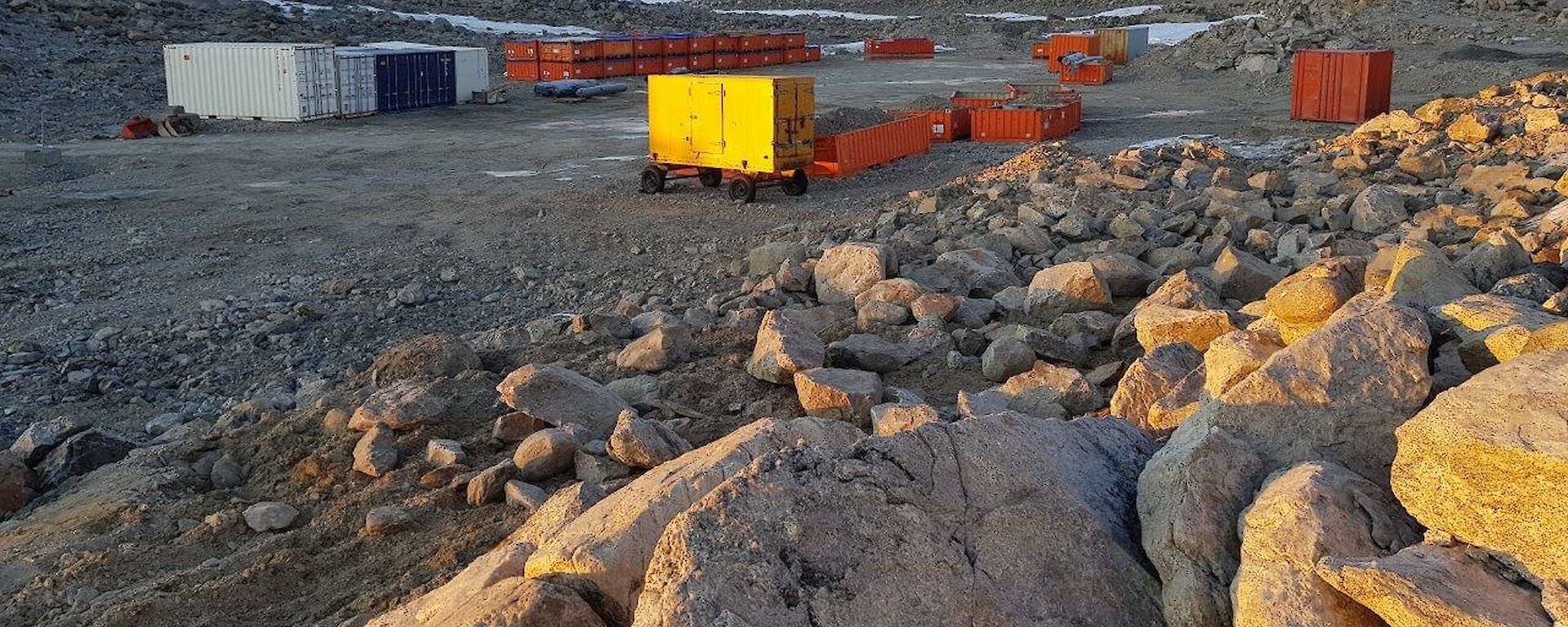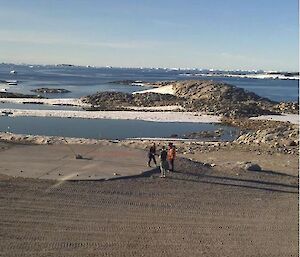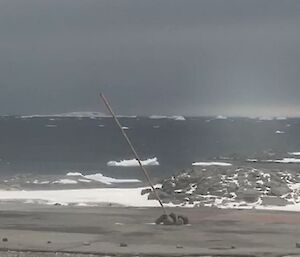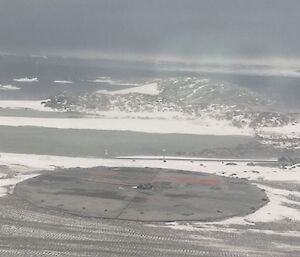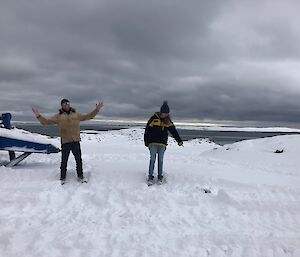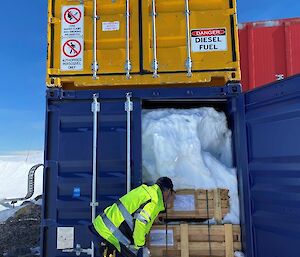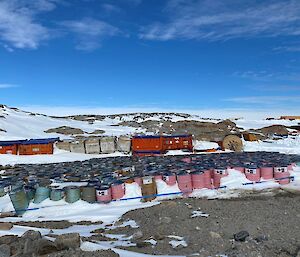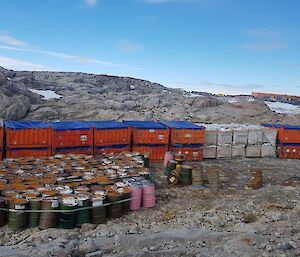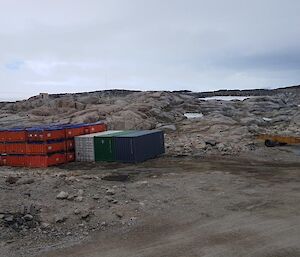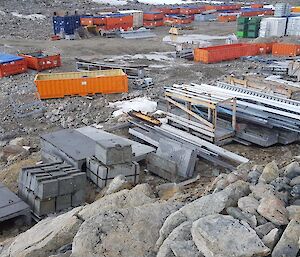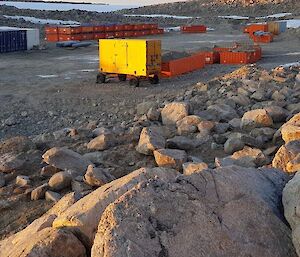With glorious sunny weather being the norm at Casey this year, there were lots of opportunities to make the most of the sunshine. Some people did this by going out on ski trips, or hiking to huts for the night, or checking out the wildlife around the local area. Others used their time much more productively and decided to install a sundial on the old helipad out the front of the red shed.
This was not a project that was undertaken lightly. It was intended that this sundial be a permanent installation that would eventually become an integral part of life at Casey Station. Over the peak of summer, the helipad receives around 15 hours of usable sunshine each day, making it the perfect spot for this project.
Research was conducted and the operation was carefully planned over a number of days. We learnt that the arm of a sundial is called a gnomon (sure to come in handy for a crossword answer down the track!). We also learnt that the angle of the gnomon above the ground has to be the same as the latitude of the sundial (in this case 66.3 degrees).
Installation was a stressful yet exciting time for all involved. Once a suitable bamboo cane was in position and at exactly the right angle, a team of expeditioners undertook the arduous task of placing a rock on the shadow it cast on every hour. The result was breathtaking, as seen in the pictures below.
In the end, thanks to a combination of not-so-sunny days followed by 50 knot winds, the sundial was used to successfully tell the time exactly once. It was 1215 on 06 Feb 2020, and it is a time that will always be held dear to the members of this year’s summer team at Casey Station.
Hannah Phelps, Bureau of Meteorology Forecaster

